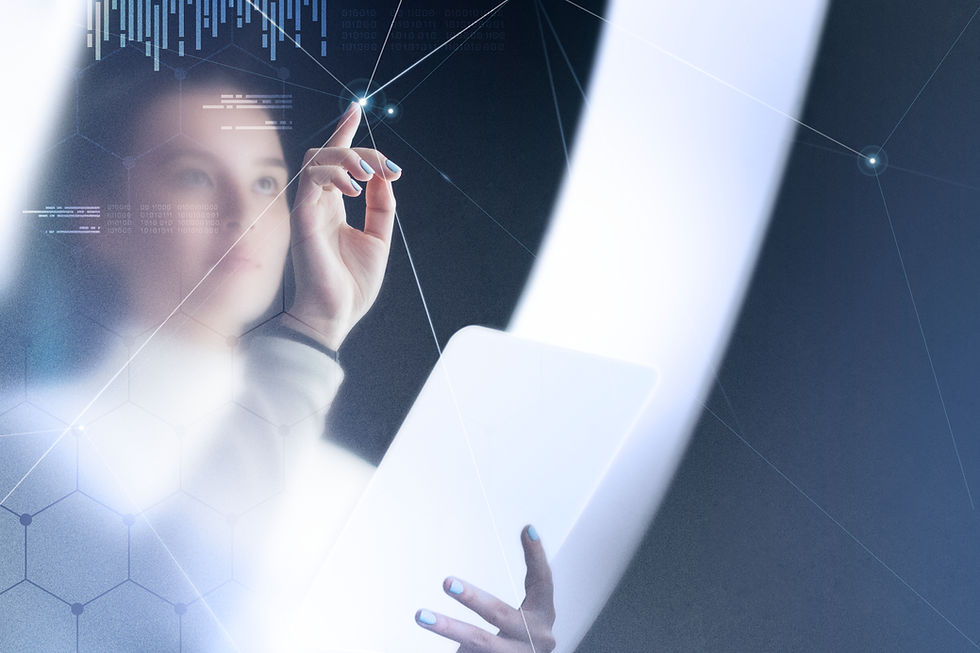Unboxing Emotion: The Psychology Behind Great Packaging Design
- Brindha Dhandapani
- 5 days ago
- 4 min read

In a world where a consumer makes a decision in less than 7 seconds on a crowded shelf or scrolls through a product listing online, packaging design has become more than just protective wrapping. It's your first impression, your silent pitch, and your emotional hook.
Why Emotion Matters in Packaging
Maybe it was a luxurious candle with embossed matte black paper.
A skincare bottle that looked so clean, you trusted it instantly.
Or a playful tea box that made you smile in the middle of a rough day.
That moment? That’s emotional branding in action, and packaging plays a starring role.
Emotional Triggers in Packaging Influence:
Perceived value of a product
Trust in the brand
Willingness to purchase or pay a premium
Word-of-mouth referrals and social sharing
Your packaging is your frontline in the fight for consumer trust, and emotion is your most effective weapon.
The Psychology Behind Packaging Design
1. Color Psychology
Color isn’t just visual, it’s emotional.
Red: urgency, excitement, appetite
Blue: trust, calm, professionalism
Green: health, sustainability, freshness
Black: luxury, power, mystery
Smart brands use color strategically, aligning it with the emotion they want the consumer to feel before they even read the label.
2. Tactile Experience
We process information not just through sight, but through touch. Materials matter:
Soft-touch matte creates a premium feel.
Kraft paper signals eco-consciousness
Embossing, foil, or texture adds memorability.
The feel of a package can make a ₹500 product feel like ₹1,000
3. Simplicity vs. Stimulation
Minimalism can evoke calm, clarity, and confidence. But in some markets (like kids’ snacks or energy drinks), stimulating visuals win attention.
The emotional impact depends on your audience:
Who are they?
What are they stressed or excited about?
What emotion does your product solve or enhance?
4. Storytelling & Visual Cues
Humans are wired for stories. Packaging that hints at a narrative through illustrations, messaging, or brand voice triggers curiosity and connection.
Example: A cold brew coffee brand tells the story of its high-altitude Peruvian beans on the side of the bottle. The consumer feels like they’re part of something deeper than just a beverage.
5. Consistency Across Touchpoints
When packaging matches your website, tone of voice, email, and social presence, it creates an emotional echo. Familiarity breeds trust.
Great packaging isn’t an isolated design; it’s part of a cohesive brand ecosystem.
Unboxing: The Moment That Matters Most
If you design it right, it can:
Increase perceived product value.
Trigger dopamine release (anticipation + satisfaction)
Encourage sharing, boosting organic reach.
Create brand loyalty through delight.
Brands That Master Packaging Emotionally
Let’s skip the usual suspects like Apple and Tiffany. Here are newer or lesser-known brands that win with emotional packaging:
1. Meow Meow Tweet (Skincare)
Their packaging is hand-illustrated, playful, and entirely compostable. It reflects the brand’s quirky, ethical values.
The result? An emotional connection through creativity and sustainability.
2. Fellow (Coffee Gear)
Fellow’s matte black packaging, magnetic lids, and minimal branding turn coffee equipment into a lifestyle experience.
When you unbox a Fellow product, it feels like opening gear from the future designed just for you.
3. Blueland (Home Cleaning Products)
Their messaging clean your home without dirtying the planet, is baked into every package.
Their tablet refills come in sleek compostable wrappers, turning a mundane task into an emotionally satisfying ritual.
Sustainable Packaging
Consumers today care about what happens after they open your box. Eco-conscious packaging doesn’t just check a box—it signals empathy, values, and responsibility. It triggers emotions like pride, relief, and alignment.
Emotional Impact of Sustainable Design:
Paper over plastic = conscious, intentional
Reusability = thoughtfulness
Minimal waste = respect for the future
Sustainability is no longer a trend. It’s part of emotional design.
Write Packaging Content That Converts
If you're a design agency or product brand, create content around these high-intent, emotion-focused search terms:
“Emotional packaging design examples”
“How packaging design influences consumer behavior”
“unboxing experience strategy for brands”
“Packaging design that increases brand loyalty”
“Best materials for luxury packaging in 2025”
How Agencies Should Approach Emotional Packaging
1. Start with Emotion Mapping
Before sketching anything, define what you want people to feel.
Calm?
Curious?
Empowered?
Luxurious?
2. Prototype the Unboxing
What’s the first touch?
Where’s the moment of surprise?
Is there a share-worthy detail?
3. Use Emotionally Intelligent Copy
Packaging copy should be warm, human, and brand-aligned. Write like you’re speaking to one person, not a market segment.
4. Test With Real People
Observe reactions. Where do they pause? Smile? Struggle? The best packaging evokes micro-emotions throughout the journey.
Final Words: Emotion Is the New Differentiator
We live in an age where almost any product can be copied, matched, or undercut. What can’t be replicated? The emotional connection you build through brand and packaging.
Packaging is not just a design challenge. It’s a psychological opportunity. It lets you shape perception, build memory, and create brand loyalty in seconds.
The unboxing moment isn’t the end of the customer journey; it’s the emotional climax. So if you’re designing packaging in 2025, forget about boxes and labels for a second.
Ask yourself:
What will they feel when they touch it?
What memory are you creating?
What emotion will they associate with your brand?
That’s where great packaging begins.




Comments